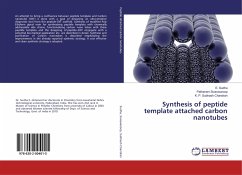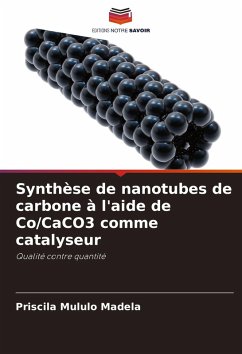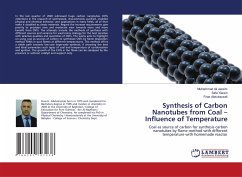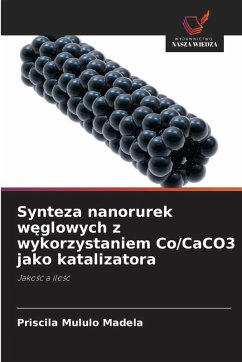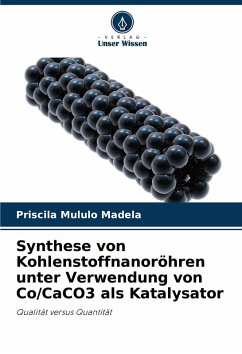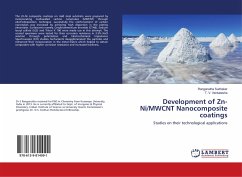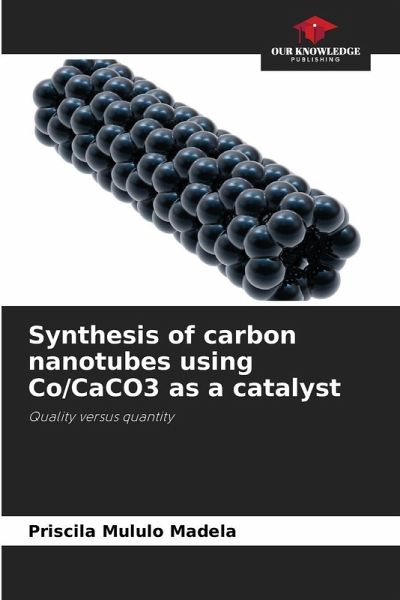
Synthesis of carbon nanotubes using Co/CaCO3 as a catalyst
Quality versus quantity
Versandkostenfrei!
Versandfertig in 6-10 Tagen
41,99 €
inkl. MwSt.

PAYBACK Punkte
21 °P sammeln!
In this study, the catalysts 12% (m/m) Co/Al2O3 and x% (m/m) Co/CaCO3 (x=2.5%, 5%, and 12%) were synthesized by the combustion method and tested in the synthesis of carbon nanotubes (CNTs) by the Catalytic Vapor Decomposition (CVD) method. Methane and acetylene were the carbon sources used, and the reaction temperatures were 700 °C for acetylene and 900 °C for methane. The results of Raman spectroscopy and scanning electron microscopy analyses revealed that the CNTs produced with the cobalt catalyst on alumina were of better quality but difficult to purify, as it was not possible to remove t...
In this study, the catalysts 12% (m/m) Co/Al2O3 and x% (m/m) Co/CaCO3 (x=2.5%, 5%, and 12%) were synthesized by the combustion method and tested in the synthesis of carbon nanotubes (CNTs) by the Catalytic Vapor Decomposition (CVD) method. Methane and acetylene were the carbon sources used, and the reaction temperatures were 700 °C for acetylene and 900 °C for methane. The results of Raman spectroscopy and scanning electron microscopy analyses revealed that the CNTs produced with the cobalt catalyst on alumina were of better quality but difficult to purify, as it was not possible to remove the support using the procedures employed. CaCO3, on the other hand, was easily removed by acid treatment. Regarding the yield of the reactions, the cobalt catalyst supported on carbonate was more active, achieving much higher yields than those found for the cobalt catalyst on alumina. The latter proved to be very low (less than 30%).



